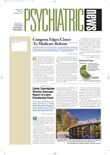As many as one out of five children lives with a mental illness, according to the World Health Organization. These children are the focus of this year’s World Mental Health Day (WMHD), which hopes to call attention to the need for effective treatment and improved access to services.
The theme of this year’s WMHD, which will be held on October 10, is “Emotional and Behavioral Disorders of Children and Adolescents.”
The World Federation for Mental Health, an organization founded in 1948 to raise awareness of mental illnesses, has sponsored WMHD since 1992.
This is the second year in a row in which young people with psychiatric disorders have been at the center of WMHD’s efforts—last year’s theme was “The Effects of Trauma and Violence on Children and Adolescents.”
According to Rosalynn Carter, former first lady and honorary chair of WMHD, there is “far too little attention and resources currently allocated to understanding and effectively treating these problems experienced by children and adolescents.”
Her comments appear in a letter that is part of a WMHD tool kit sent to psychiatrists, mental health professionals, advocates, and organizations worldwide.
The kit includes information on various mental disorders that affect young people, tips for organizations and health care professionals about how to organize and publicize WMHD activities, and resources for more information on children’s mental health issues.
The tool kit also provides examples of how psychiatrists and mental health professionals in different areas of the world are going the extra mile to provide care to young people—literally, in one case: In Germany, a mobile mental health service consisting of a psychiatrist, psychologist, and social worker drive to different towns to conduct psychiatric evaluations and follow up with children who have been discharged from local hospitals.
In another model intervention, known as Empilweni, or Place of Healing Project, researchers at the University of Cape Town in South Africa opened a walk-in mental health clinic for children and their families after discovering in a 1993 epidemiological study that 64 percent of children in a local sample had at least one psychosocial problem.
Many of the children who come to the clinic are treated for sexual abuse, conduct disorders, and the mental health consequences of HIV/AIDS, according to the WMHD.
The 2003 World Mental Health Day materials are posted on the Web at www.wfmh.org/wmhd.html. ▪
